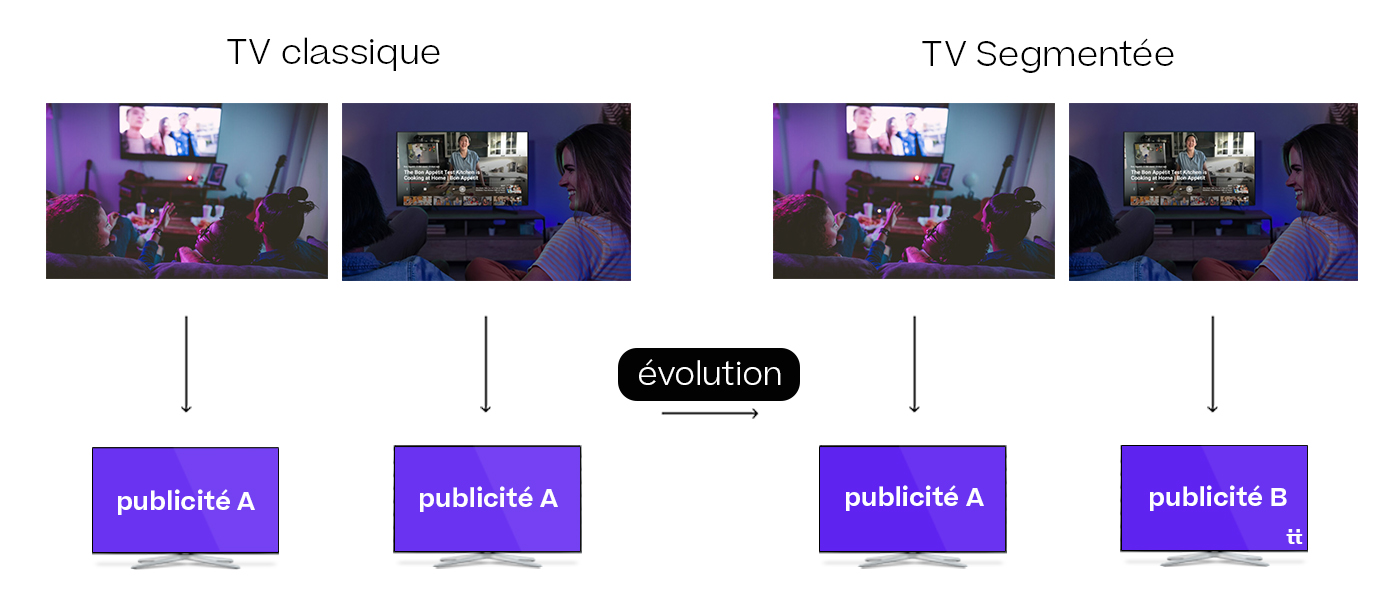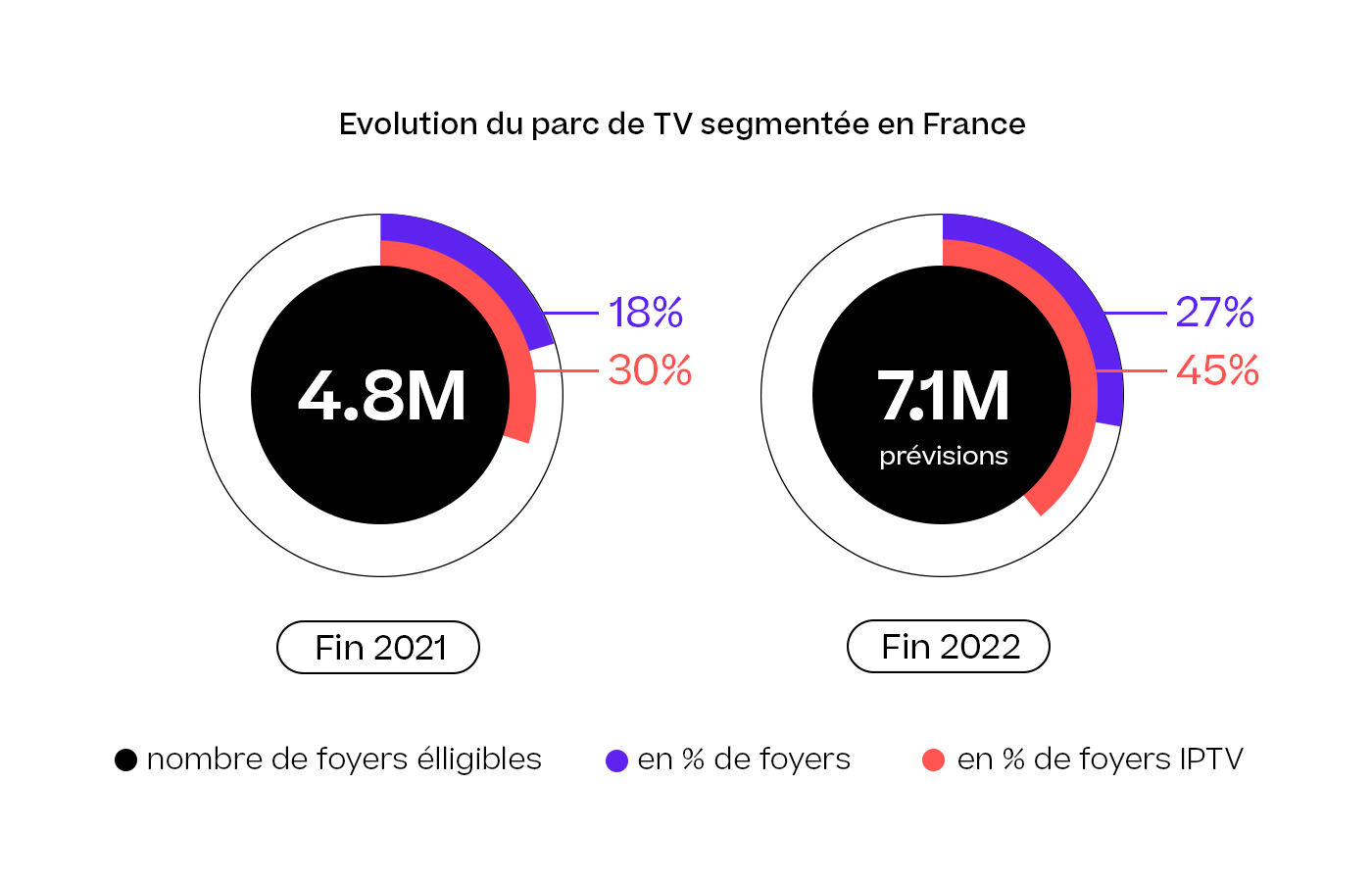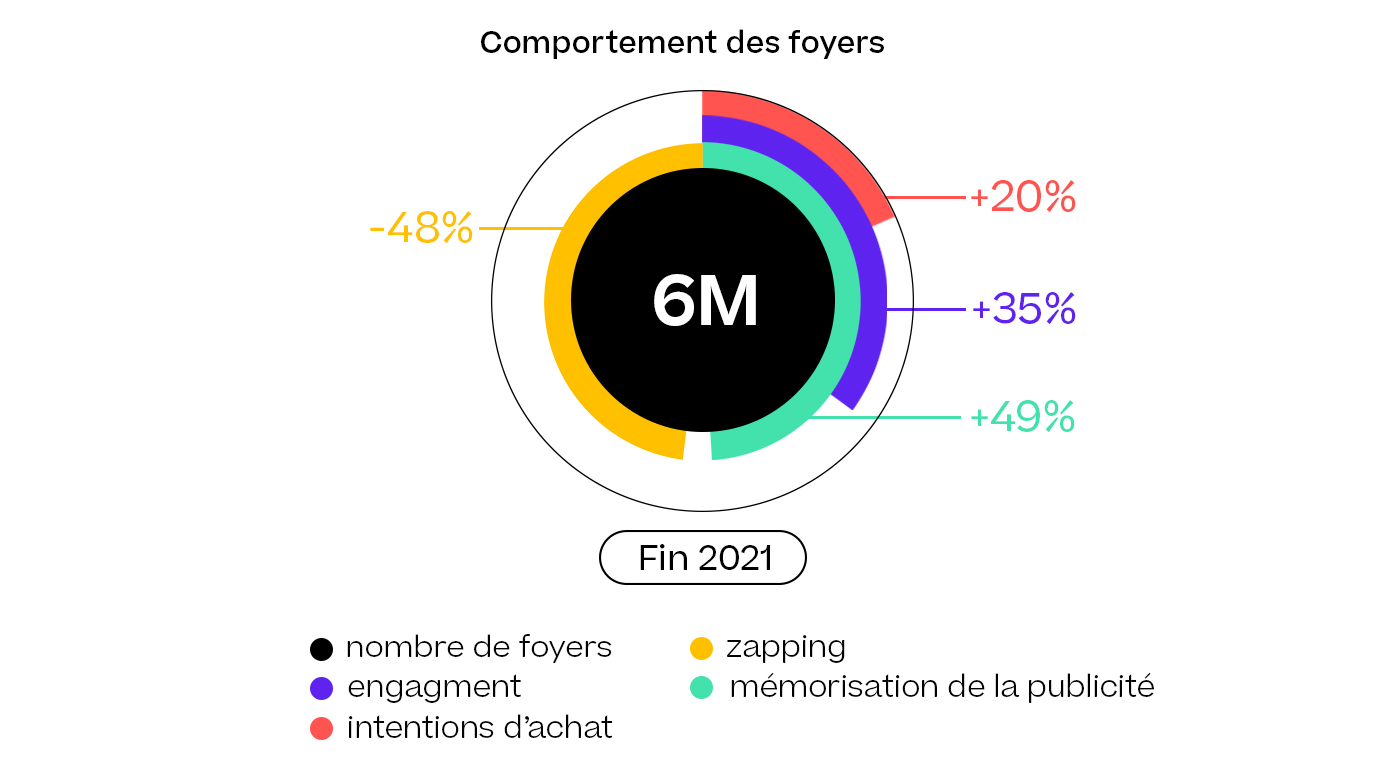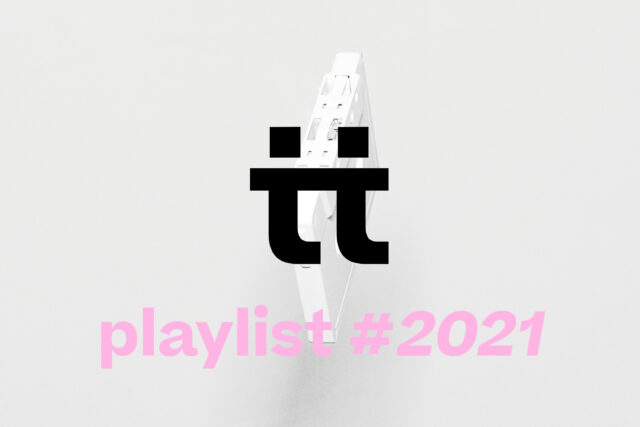Segmented TV: Understand and consider new opportunities.

At a time when the rise of digital is multiplying screens, TV, the pioneer among them, is connecting and democratizing access to TV advertising campaigns.
Segmented TV, why not ?
Segmented TV consists of targeting the recipients of advertising messages on linear television programs, using data collected by internet boxes by telecom operators. Previously prohibited in France, it has been authorized since a decree of August 2020. It requires the consent of households, in an opt-in approach compatible with the GDPR regulations on data protection.
Advertisers can thus send personalized, targeted advertising to consenting users on their televisions, in the same way as on the Internet. There is no difference to the viewer in viewing the ad. On the advertiser side, this allows those for whom TV was usually too expensive to have access to it thanks to reduced prices, through segmentation which also makes it possible to reach local players. Channels can better value their advertising inventories by distributing them more finely thanks to the processed data.

How it works ?
The principle is to activate criteria of location, hours, demographics (gender, age, CSP, etc.), uses, even CRM by optimizing data to retarget customers already identified with operators. In order to offer optimal segmentation granularity, FranceTV Publicité has, for example, launched three new specific targets locally: Living areas (the economic hearts of the territories), Travel time and DataWeather (activation of zones according to weather criteria). They are added to the socio-demographic categories and the specific consumption targets of its programs.
3 steps are necessary to activate a campaign:
-
the definition of the targeted objective and the corresponding targeting criteria
-
choice of budget and period
-
the creation of the advertising spot
FranceTV was the first advertising network to broadcast addressed TV spots, thanks to its agreements with the three national operators Orange, Bouygues Telecom and SFR. It has already broadcast more than 100 segmented TV campaigns, such as with Renault, which targeted the Greater Paris and Normandy regions for Twingo E-Tech, or with Boursorama, to recruit customers on regional criteria crossed with age criteria .
It is also possible to buy segmented TV campaigns on M6 and since March 2022 for TF1.
What is the segmented TV market ?
The device is added to all the ways of buying TV spaces that together form Advanced TV: connected TV (or CTV, which refers to TVs connected to the Internet directly or via a box), OTT ( Over The Top content packages, independent of the internet service provider, such as Amazon Prime or MyCanal) and VOD (Video On Demand services, such as Netflix or Salto).
According to FreeWheel, a specialist in video monetization, 78% of French advertisers plan to increase their advertising investments on Advanced TV in 2022, particularly in segmented TV, which 38% of French advertisers consider to be the future of advertising. on TV.
At the end of 2021, 18% of French households, or 4.8 million, had a box eligible for segmented TV, according to the SNPTV (Syndicat National de la Publicité Télévisée). The target for the end of 2022 is 27%, or 7.1 million households. The firm Oliver Wyman specifies that the real market for segmented television could weigh in France between 120M€ and 220M€ in 2023.

Finally, the SNPTV studied the English segmented TV network Sky, launched in 2014 with 6 million households. Its optimistic results show that channel surfing decreases by 48%, while purchase intentions increase by 20%, engagement by 35%, and ad recall by 49%.

Which strategy for segmented TV ?
For segmented TV to flourish in France, operators had to coordinate to synchronize their technologies, and in particular to be able to offer that an advertisement could be broadcast locally in the exact place of other messages. This requires an Ad-server, the choice and testing of which took time, and will moreover force the operators, who bear the cost of the device, to renew their fleet of oldest boxes to make them compatible.
The crucial issue for market adoption of segmented TV will be campaign measurement. To guarantee confidence, Médiamétrie, the audience measurement specialist, will compare numerous data, in collaboration with the channels and the SNPTV. The objective is to define a process that satisfies TV audience practices (the GRP or Gross Rating Point, i.e. the average number of advertising contacts obtained out of 100 individuals) and the Internet (the CPM, i.e. the cost for thousand impressions).
Segmented TV should be considered as part of an omnichannel strategy, complementary to actions carried out on other screens, linear and digital (traditional TV, computers, mobile phones, tablets, public screens, etc.).
By combining the power of television with the personalization of digital, segmented TV is the future of targeted campaigns. Precisely parameterized, sparingly budgeted, autonomously activated and highly effective, campaigns put the consumer back at the center of the advertising process.







